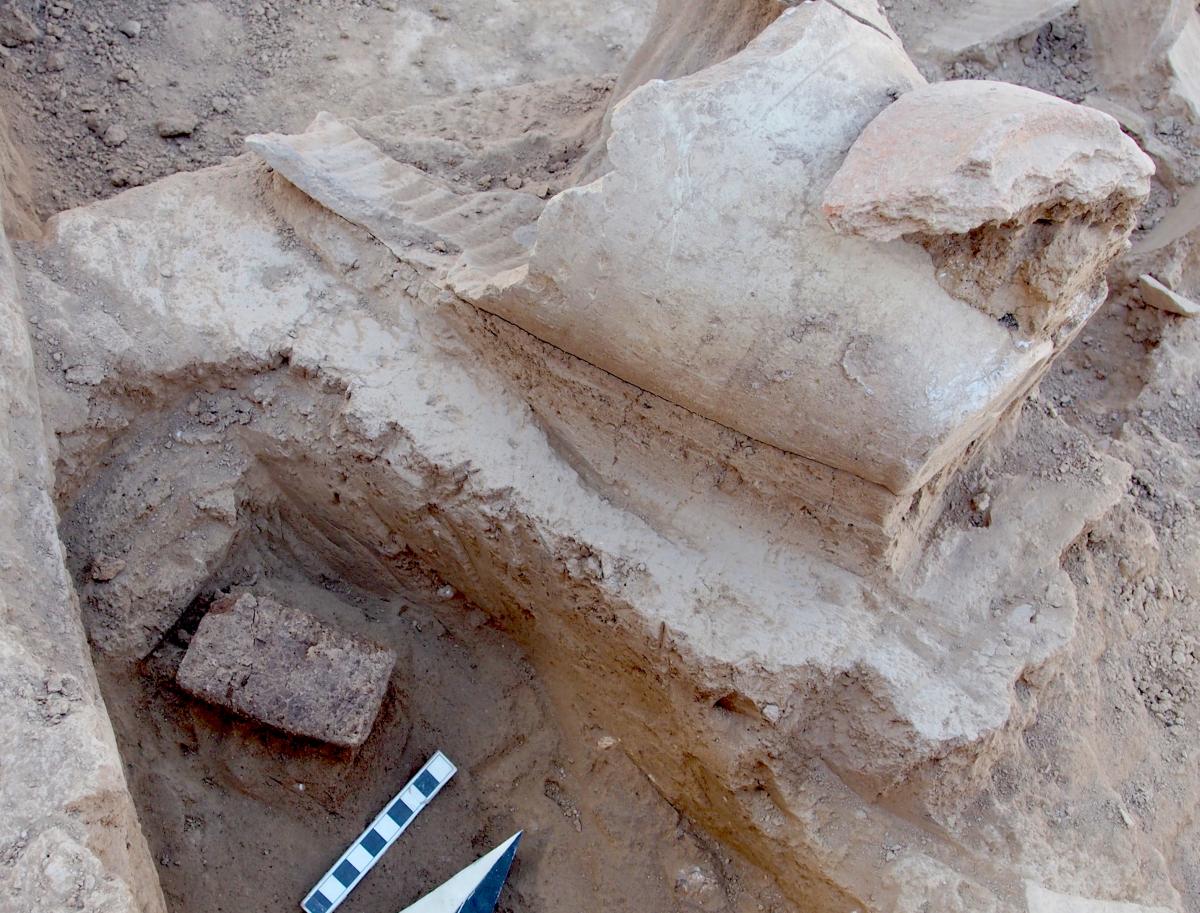Press Releases Archive
09.05.2018
Cuneiform tablets from Bassetki reveal location of ancient royal city of Mardaman
Assyrian clay tablets from the 2nd millennium BC link excavation site to important commercial city
Translations of Assyrian writings found by archaeologists from the University of Tübingen have yielded a secret lost to history: The place where the clay tablets were found - Bassetki, in Autonomous Region of Kurdistan in Iraq - appears to be the ancient royal city of Mardaman. This important northern Mesopotamian city is cited in ancient sources, but researchers did not know where it lay. It existed between 2,200 and 1,200 years BC, was at times a kingdom or a provincial capital and was conquered and destroyed several times.
Archaeologists from Tübingen’s Institute for Ancient Near Eastern Studies excavated the archive of 92 clay tablets in summer 2017. Headed by Professor Peter Pfälzner, the team is working at the Bronze Age site with Dr. Hasan Qasim of the Duhok Antiquities Department. The clay tablets date to the Middle Assyrian Empire, about 1,250 BC. The small, partly crumbling tablets have now been read painstakingly by the University of Heidelberg philologist Dr Betina Faist, who is cooperating as specialist for the Assyrian language with the archaeological project at Tübingen. She used photographs of the texts, which bit by bit shed light on the history of the city and the region at the time of the Middle Assyrian Empire.
To the archaeologists’ surprise, Dr. Faist was able to identify the find site as the ancient city of Mardama. As the cuneiform scripts show, it was the administrative seat of a Middle Assyrian governor. This reveals a new, previously unknown province of the empire, which straddled large parts of Northern Mesopotamia and Syria in the 13th century BC. Even the name of the Assyrian governor, Assur-nasir, and his tasks and activities are described in the tablets. “All of a sudden it became clear that our excavations had found an Assyrian governor’s palace,” says Pfälzner.
At the same time, the translation reveals the location of the city named as Mardaman in Old Babylonian sources from around 1,800 BC, and which is likely to be the Assyrian Mardama. According to the sources, it was the center of a kingdom which was conquered by one of the greatest rulers of the time, Shamshi-Adad I, in 1,786 BC and integrated into his Upper Mesopotamian empire. However, a few years later it became an independent kingdom under a Hurrian ruler called Tish-ulme. A period of prosperity followed, but shortly later the city was destroyed by the Turukkaeans, people from the Zagros Mountains to the north. “The cuneiform texts and our findings from the excavations in Bassetki now make it clear that that was not the end,” Pfälzner says. “The city existed continuously and achieved a final significance as a Middle Assyrian governor’s seat between 1,250 and 1,200 BC.”
The history of Mardaman can be traced back even further, to the early periods of Mesopotamian civilization. Sources from the Third Dynasty of Ur, approximately 2,100–2,000 BC, portray it as an important city on the northern periphery of the Mesopotamian empire. The oldest source goes back to the Akkadian Empire, which is considered the first empire in history. It mentions that the city was destroyed a first time around 2250 BC by Naram-Sin, the most powerful Akkadian ruler.
“The clay tablets of Bassetki make an important new contribution to the geography of Mesopotamia,” the Assyriologist Betina Faist explains. This discovery may provide clues to the locations of other early cities in Mesopotamia, Pfälzner says. “Mardaman certainly rose to be an influential city and a regional kingdom, based on its position on the trade routes between Mesopotamia, Anatolia and Syria. At times it was an adversary of the great Mesopotamian powers. So the University of Tübingen’s future excavations in Bassetki are sure to yield many more exciting discoveries.”
The Bronze Age city site of Bassetki was discovered in 2013 by archaeologists from the Tübingen collaborative research center 1070, ResourceCultures. The clay tablets found in 2017 had been deposited in a pottery vessel used as an archive, and had been wrapped in a thick covering of clay along with other vessels. “They may have been hidden this way shortly after the surrounding building had been destroyed. Perhaps the information inside it was meant to be protected and preserved for posterity,” Pfälzner explains.
 |  |
Photo 1: Discovery and unearthing of the vessel containing the Assyrian clay tablets in Bassetki. Photo: Peter Pfälzner, University of Tübingen Bassetki | Photo 2: The Bassetki tell on the broad plain of the eastern Tigris with the Zagros mountains in the background. Photo: Matthias Lang/ Benjamin Glissmann, University of Tübingen eScience-Center |
 |  |
Photo 3: A cuneiform clay tablet on the floor of the Photo: Peter Pfälzner, University of Tübingen | Photo 4: The Assyrian cuneiform tablets in a ceramic vessel Photo: Peter Pfälzner, University of Tübingen |
Contact:
Professor Dr. Peter Pfälzner
University of Tübingen
Institute for Ancient Near Eastern Studies
Phone +49 7071 29-78530
peter.pfaelznerspam prevention@uni-tuebingen.de
PD Dr. Betina Faist
University of Heidelberg
Seminar für Sprachen und Kulturen des Vorderen Orients / Assyriologie
betina.faistspam prevention@ori.uni-heidelberg.de
Eberhard Karls Universität Tübingen
Public Relations Department
Dr. Karl Guido Rijkhoek
Director
Antje Karbe
Press Officer
Phone +49 7071 29-76789
Fax +49 7071 29-5566
antje.karbe[at]uni-tuebingen.de
https://www.uni-tuebingen.de/en/university/news-and-publications.html

